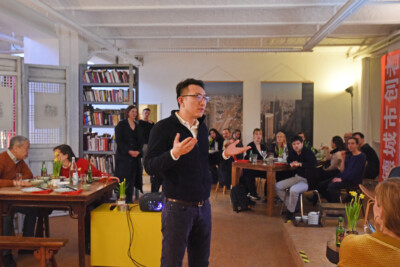ZHANG Zhen shares her impressions on some significant features of city planning in contemporary China.



What do architects/urbanists need to make livable cities?
Mostly, they need to care about, love and understand human beings. All the stakeholders must share an understanding of the whole picture: humanity is the center and money is secondary. Then they can locate the equilibrium in the spectrum of nature vs. infrastructure and leverage the elements’ synergies.
How do you value your personal contribution to making livable cities?
As designers, we are shapers that inspire people. Regardless of the scale of the project – be it a chair or a city – the sole purpose must be to create a whole organism with a relationship to individuals and society. When the true starting point and goal revolves around this concept, everything else falls into place: the requirements for shelter, preservation of nature and utilization of resources.
Your architecture creates spaces for living and learning and not static physical structures. Is this approach acknowledged in China’s architectural world?
The industry is shifting from a value placed on the constructed materials to the more “invisible” volume they create. As Confucius said: “A house is defined by walls while its use depends on the empty space within. Therefore, take advantage of what is there by making use of what is not.”
What are the biggest obstacles to and opportunities for creating cities?
The biggest obstacle we face is the recalibration of all stakeholders – moving them toward the same goal and moving the goal away from purely financial short- term motives. We invite our clients to explore Chinese modernity and tradition with us, defining value that is not just measured in RMB.
You also teach at the Central Academy of Fine Arts. How can education become more innovative?
My experience says that students’ perception of architecture is typically limited to concrete and engineering. I think a lot of this is due to a lack of social understanding as individuals and a collective. We need to teach the basics and subtlety of human needs.
The Western notion of public spaces is related to rights to the city. Is it possible in Beijing to appropriate space temporarily?
Yes. Absolutely. I see it already creeping back into the formalized urban fabric of Beijing: from line dancing groups populating the streets to self-appropriated outdoor lounges in the neighborhoods.
What is your vision for Sino-German cooperation?
Education for everyone – including myself! We need to continually evolve and adapt. The Internet has voided the need for knowledge, yet knowledge-based learning is still prevalent in many mindsets and education systems. I would like to see the methods of design thinking and enterprise education embedded in everyone’s lives, across all fields as basic tools for all to master.
About DONG Hao:
DONG Hao received his bachelor’s degree in architecture from the Beijing institute of Civil engineering and architecture and a master’s degree in architecture from Pratt institute in New York. After living and studying in the U.S. for almost 5 years, he returned to China in 2002. DONG Hao began working at major state-owned design enterprise Beijing of Architectural Design in 2003. He co-founded Crossboundaries, based in Beijing, in 2005 and is managing director of the Beijing office. He teaches at the Central Academy of Fine Arts and Tsinghua University.